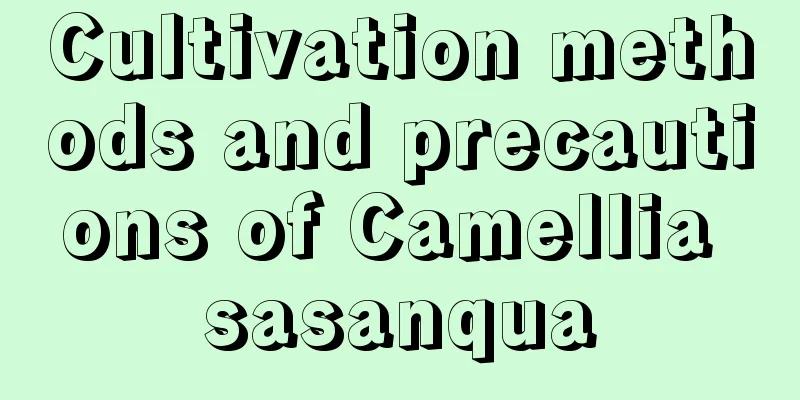If gardenia drinks some magic water, it will immediately turn green and ooze oil, and it will grow wildly and cannot be stopped!

Overwatering causes yellowing leavesThe end of the gardenia flowering period coincides with the arrival of autumn. Many friends think that the weather is cooler and the gardenia should not be as fragile as in summer, so they start watering it vigorously! Symptoms: The leaves start to turn yellow from the bottom and slowly move upwards. There are basically no yellow leaves at the top. The veins of the leaves are normal green, and the rest of the leaves are yellow. Rescue measures: Poke the soil a few times with chopsticks to loosen it, then place it in a well-ventilated place to speed up the evaporation of moisture accumulated in the soil. Alkaline soil causes yellowing leavesFriends in the north should know that gardenia is really difficult to grow! This is mainly because the alkaline soil in the north is not suitable for the growth of gardenia, so yellowing of leaves has become commonplace. Symptoms: The veins of new leaves are green, but the flesh is yellow-green, while the old leaves are basically normal. Rescue measures: Prepare a plastic bottle, add 100g of citric acid, put a rusty iron nail and fill it with water. After the rust disappears and the solution turns light green, dilute it with 500 times the amount of water and use it to water the gardenia. Do this once every 10 days and the yellow leaves will slowly disappear. Excessive fertilization causes yellowing leavesIn order to make the gardenia grow fast and strong, many flower lovers like to add some fertilizer to the water every time they water it. After doing this many times, you will find that the gardenia has more and more yellow leaves! Symptoms: The old leaves start to turn yellow from the veins, gradually spreading to the entire leaf. In severe cases, the entire plant will turn yellow. Rescue measures: Flush the potting soil with plenty of water, or use the potting method to dilute the overly concentrated fertilizer in the soil. Environmental changes lead to yellowing leavesMany flower lovers like to buy gardenias when the seasons change, but after taking them home, the originally green leaves suddenly turn yellow and fall off continuously. Symptoms: A few days after you bring the gardenia home or move it from outdoors back indoors, the leaves of the gardenia will turn yellow unevenly. Rescue measures: Place it in a well-ventilated place with diffused light for a period of time, and wait for the gardenia to slowly adapt to the new environment. If the leaves of gardenia turn yellow for more than half a month, you should consider washing the roots and changing the pot. Wash the roots of gardenia and guarantee that they will not rot for 10 years!Many gardenias bought at the flower market are made of clay soil. This kind of soil will gradually become hardened like bricks after repeated watering, and it is easy for water to accumulate and cause root rot of the gardenia. 1. If you find that the soil is severely compacted, it is best to remove the pot and wash the roots for the normal growth of the gardenia. 2. Prepare a large bucket and pour clean water into it. Soak the gardenias removed from the pots in the water to clean the roots. Do not force the soil off the roots, as this can easily damage the roots. It is best to take it out and shake it every once in a while to allow it to soak naturally. 3. After cleaning, trim the rotten roots of the gardenia, and then soak it in rooting water for half an hour. You can add some carbendazim to the rooting water. 4. While the gardenia is soaking its roots, prepare the nutrient soil. The soil for planting gardenias can be made by mixing leaf mold with coconut bran, and then adding some coarse sand and perlite. Before putting the soil into the pot, place a few broken bricks or wooden strips at the bottom of the pot. 5. After potting, water thoroughly and move to a cool and ventilated place. Prepare a mineral water bottle, poke 6 small holes on one side of the bottle with a sewing needle, fill it with water, tighten the cap, place it next to the root of the gardenia, and let it drip slowly. |
Recommend
The most prosperous fortune flower
1. White Palm Anthurium is also called the smooth...
Can peach trees be planted outside the house?
Can peach trees be planted outside the house? It ...
Does Endless Summer Hydrangea prefer shade or sun?
Does Endless Summer Hydrangea prefer shade or sun...
What fertilizer to use for copper coin grass
The pennywort grows relatively fast, so it requir...
What to do if the winter jasmine does not bloom
Flowering period of jasmine Forsythia blooms rela...
How deep should garlic be planted? (How deep should the soil be for garlic planting?)
Garlic is a vegetable that likes cool and moistur...
How to grow Perilla
1. Breeding environment 1. Water: Perilla can tol...
How to plant dragon fruit seedlings
1. Choose a flower pot Choose a larger clay pot w...
How to grow and maintain sausage tree
1. Breeding methods 1. Sunlight: It has some requ...
How to cultivate Tangyin to turn it into red
Tangyin Growth Conditions Tangyin prefers a warm ...
What is the effect and principle of adding white vinegar to water flowers (which vinegar is better for watering flowers)
After growing flowers for a long time, everyone w...
How do southern grapevines survive the winter? What preparations should be made for the winter?
1. Pruning Pruning should be done in the second w...
Ten taboos for raising grass carp
Grass carp, also known as silver carp, oil silver...
How to care for the newly bought butterfly flower
1. Lighting Butterfly flower is light-loving. Aft...
How to grow tiger skin plant
1. Soil When caring for Sansevieria indoors, you ...









